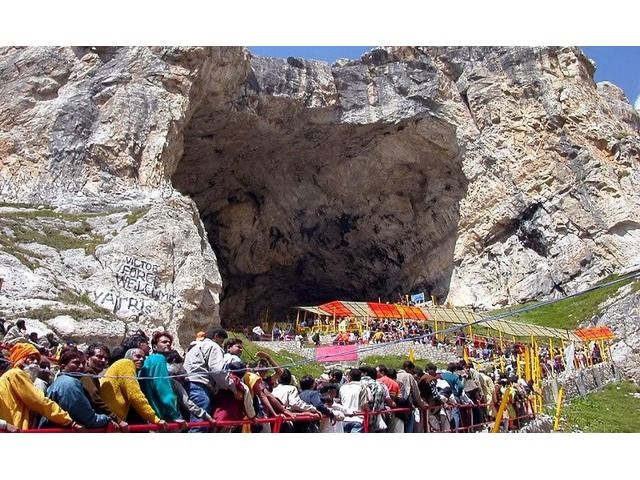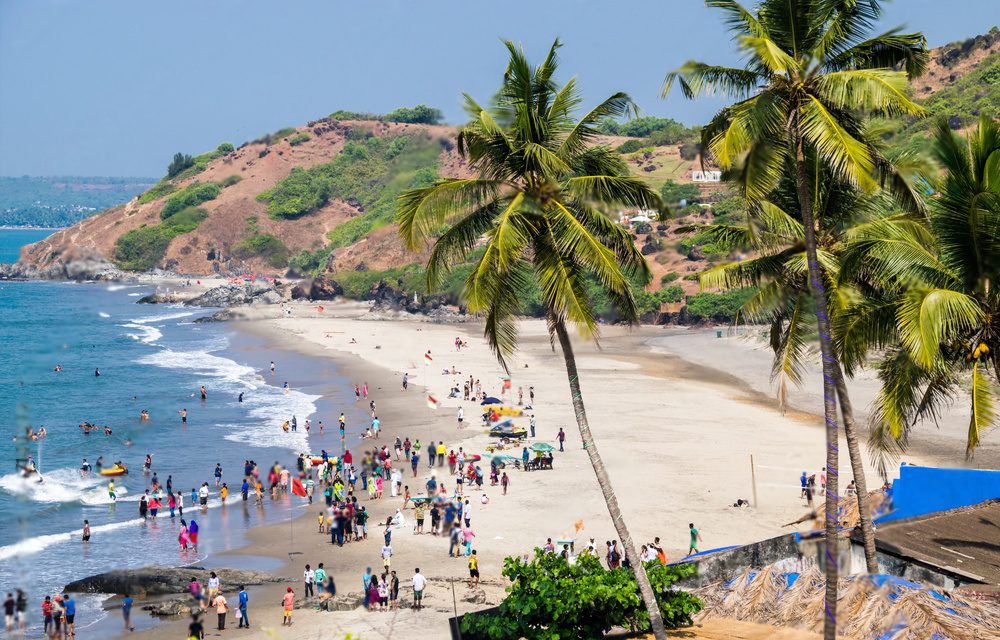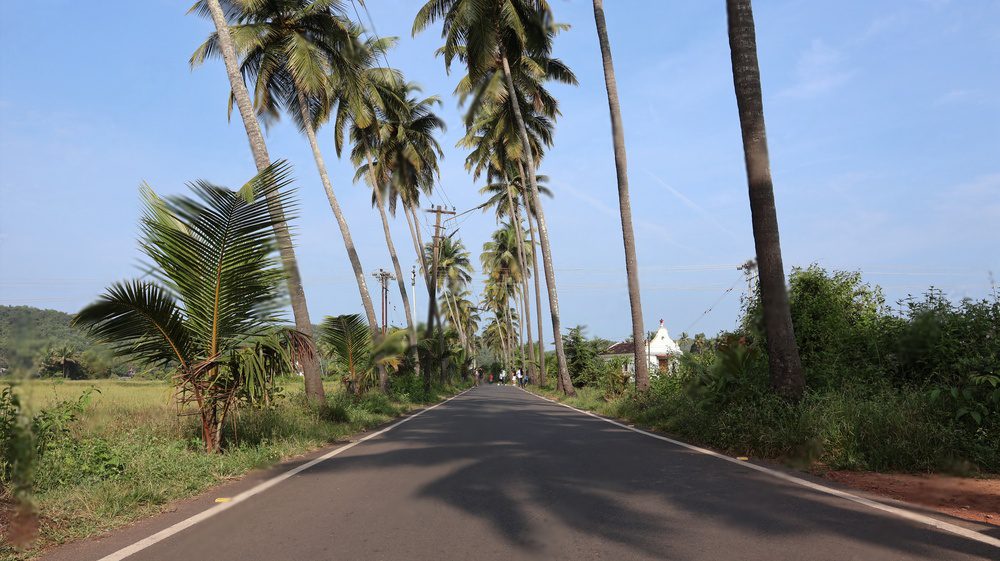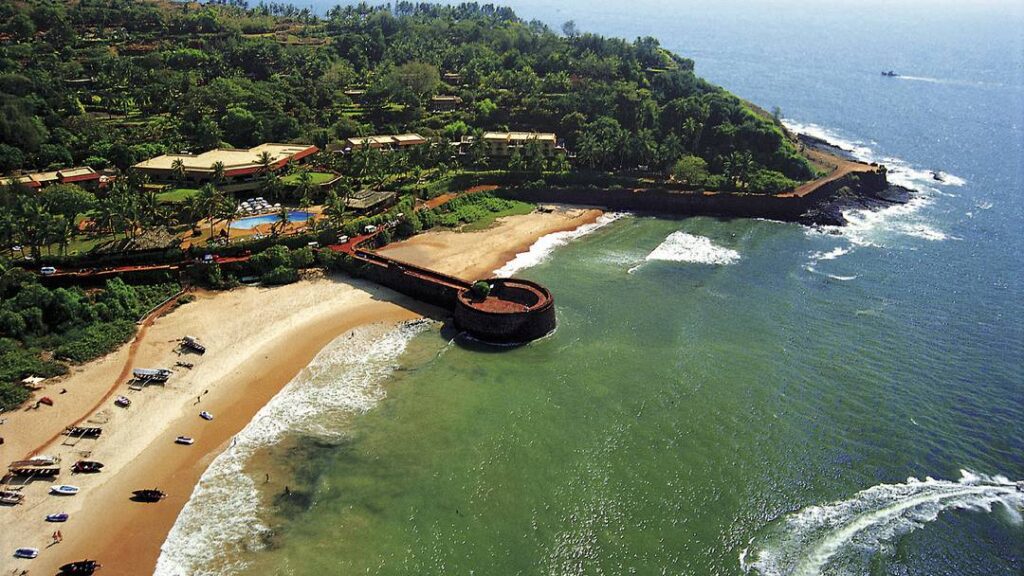Unveil the Sacred Mysteries and Spiritual Beauty of Amarnath Temple on Your Pilgrimage Adventure
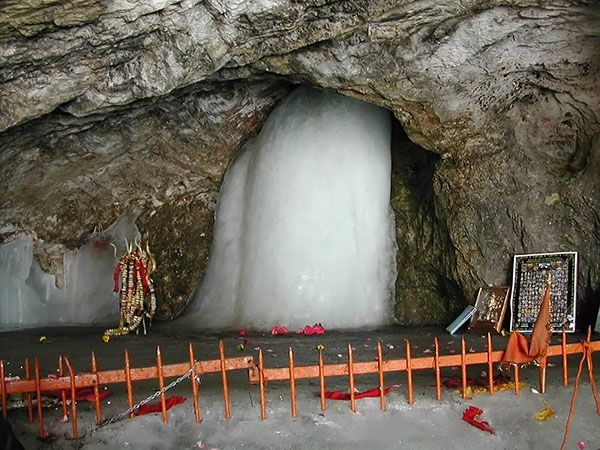

Amarnath Temple Kashmir, a holy refuge located amidst the beautiful Jammu & Kashmir is a true welcome place. This mystical homeland attracts travelers in various capacities to a strange pilgrimage of spirit and adventure.
This blog encourages you to explore not only the holy boundaries of that cave but also the great world we can see outside it. Follow us on this journey to the Amarnath where the mystical and natural intertwine while offering an opportunity for everyone looking for closeness with God.
Reaching Out to Amarnath Temple:
You can choose from various airlines operating on these routes, including IndiGo, SpiceJet, GoAir, Air India, and Vistara. Booking online or through travel agents is recommended.
Flying
Srinagar International Airport (SXR): This is the closest airport to Pahalgam, the base camp for the Amarnath Yatra. Several domestic airlines offer flights to Srinagar from major cities like Delhi, Mumbai, Kolkata, and Chennai.
- Cost: The average cost for a one-way flight from Delhi to Srinagar ranges from INR 3,000 to INR 7,000 (approximately $40 to $90 USD).
Jammu Airport (IXJ): Located in the winter capital of Jammu and Kashmir, this airport serves as another option. From here, you can further connect to Pahalgam by road.
- Cost: The average cost for a one-way flight from Delhi to Jammu ranges from INR 2,000 to INR 5,000 (approximately $25 to $65 USD).
Roads
If you are attracted to the romance of open roads, then a well-developed network awaits your discovery. In choosing a journey using the road, you enjoy the view of nature as it follows through valleys and hills. Plan your itinerary, gather the necessary items, and set off on a scenic tour that leads you toward spiritual salvation.
Delhi – Jammu – Srinagar – Pahalgam: This is the most popular route, offering scenic views of the Himalayas.
- Cost: The cost for a private taxi from Srinagar to Pahalgam is around INR 2,500 to INR 4,000 (approximately $30 to $50 USD). For a bus, the cost ranges from INR 200 to INR 500 (approximately $2.50 to $6.50 USD).
Chandigarh – Pathankot – Jammu – Srinagar – Pahalgam: This route follows a similar path to the Delhi route but offers an alternative starting point.
- Cost: The cost for a private taxi from Jammu to Pahalgam is around INR 3,000 to INR 5,000 (approximately $40 to $65 USD). For a bus, the cost ranges from INR 300 to INR 700 (approximately $4 to $9 USD).
Trains
The rail network links the main cities to Jammu & Kashmir for those appreciating a train rhythmic journey. Comfort is not the only thing a train journey offers; its pleasure accompanies an opportunity to admire nature.
Trains: Popular trains serving this route include the Jammu Rajdhani Express, Himgiri Express, Sarvodaya Express, and Jhelum Express.
- Cost: The average cost for a one-way train journey from Delhi to Jammu ranges from INR 500 to INR 3,500 (approximately $6.50 to $45 USD) depending on the class of travel.
About The Amarnath Temple in Kashmir:
Nestled in the celestial heights of the Himalayas in Jammu and Kashmir, the Amarnath Temple stands as a sacred sanctuary, a testament to the profound spiritual heritage of the region. Dedicated to Lord Shiva, the presiding deity is worshipped in the form of an ice Shiva Lingam, naturally formed inside the cave shrine.
The history of the Amarnath Temple is deeply rooted in ancient mythology, with the cave mentioned in various Hindu scriptures. Pilgrims undertake a challenging trek through rugged terrain and icy landscapes to reach the sacred Amarnath Cave, where the ice Lingam is believed to symbolize Lord Shiva’s eternal presence.
Devotees embark on the annual Amarnath Yatra, a pilgrimage that tests the endurance and faith of those who seek the divine blessings of Lord Shiva. The trek is arduous, yet the spiritual fervor is palpable as pilgrims chant hymns and make their way to the sacred cave.
The Amarnath Temple transcends its physical location, becoming a spiritual destination where devotees connect with the divine amidst the pristine beauty of the Himalayas. The annual pilgrimage transforms the region into a vibrant tapestry of faith, cultural richness, and a shared sense of devotion. Beyond its religious significance, the Amarnath Temple is a symbol of the enduring spiritual legacy that thrives in the heart of the Himalayan landscape.
Accommodation at Amarnath Temple:
Unlike most pilgrimage sites, Amarnath Cave Temple presents unique accommodation challenges due to its location within a challenging trek and a limited pilgrimage season (July-August). But fear not, weary pilgrim, for here’s a guide to navigate your stay!
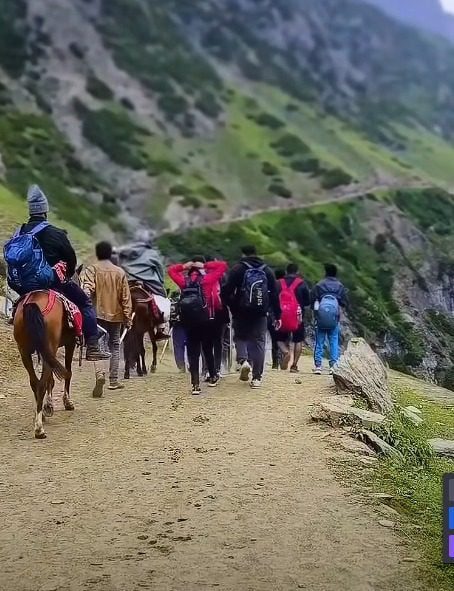

SASB-provided facilities: (Budget-friendly (₹150-₹300 per night)
- Tents: The Shri Amarnathji Shrine Board (SASB) sets up basic tented accommodations along both the Baltal and Pahalgam routes. These are simple tents with basic amenities like mattresses, blankets, and pillows. They are typically affordable and available on a first-come, first-served basis.
- Shared rooms: In certain locations, the SASB offers shared dormitory-style rooms with basic amenities like beds, blankets, and pillows. These are also budget-friendly and offer a slightly more comfortable experience than tents.
Private options:
- Guest houses: Privately owned guesthouses and lodges are available in towns like Nunwan, Pahalgam, and Baltal. These offer varying levels of comfort and amenities, ranging from basic rooms with shared bathrooms to en-suite rooms with additional services like meals or laundry. Prices vary depending on the location, amenities, and season.
- Luxury camps: A few companies offer luxury tents or pre-fabricated wooden huts at certain locations. These provide a comfortable stay with better amenities like beds, attached bathrooms, and even meals in some cases. However, they are significantly more expensive than the other options.
For the Adventurous Soul: Camping and Lodges
- Experienced trekkers can opt for independent camping at designated campsites, carrying their own gear and food supplies.
- A few basic lodges and tea houses offer rustic options with bedding and meals along the trek, ideal for short rests or seasoned adventurers.
When to Visit Amarnath Cave Temple:
Amarnath Yatra Season:
- The Amarnath Yatra generally starts on the first day of the Hindu month of ‘Ashadha’, which typically falls in late June or early July.
- in 2024, the Yatra will commence on 1st July 2024 and conclude on 19th August 2024.
- The specific date can vary slightly from year to year, depending on the lunar calendar.
All About Amarnath Yatra:
Registration:
The first and most crucial step is registering for the Yatra. Registration typically begins in April and is done online through the official website of the Shri Amarnathji Shrine Board (SASB): https://www.jksasb.nic.in/. During registration, you’ll need to submit specific documents like medical certificates and valid ID proofs.


Choose Your Route:
There are two main routes for the Amarnath Yatra:
Chandanwari Route For Amarnath Temple:
This is the shorter and more popular route, starting from Chandanwari and passing through Pahalgam and Nunwan.
The Journey Begins:
- Reach Pahalgam (Base Camp): Travel by taxi, bus, or hired vehicle from your chosen arrival point to Pahalgam, nestled amidst Kashmir’s scenic beauty.
- Pahalgam to Chandanwari (16 km): Take a comfortable journey by taxi, jeep, or shared cab to reach Chandanwari, the starting point for the trek.
The Trek:
- Chandanwari (3,300 m): This beautiful meadow offers shops, restaurants, and lodging options. Here, arrange essentials like walking sticks, ponies (if needed), and porters to carry luggage.
Day 1:
- Chandanwari to Pissu Top (3 km): Enjoy a moderately challenging trek through a scenic pine forest. Opt for a pony ride or savor the tranquility of walking amidst the mountain landscape.
- Pissu Top (3,400 m): Take in the breathtaking panoramic views and utilize basic campsites or tea stalls for a refreshing break.
Day 2:
- Pissu Top to Sheshnag (9 km): This challenging leg presents steeper climbs and rocky terrain. Be prepared for colder temperatures at higher altitudes and consider pony rides or porter assistance.
- Sheshnag (4,590 m): Witness the mesmerizing Sheshnag, an alpine lake offering basic accommodation and food options.
Day 3:
- Sheshnag to Panchtarni (12 km): Navigate a challenging trek through glaciers and moraines. Exercise caution on potentially slippery paths, especially during snowfall. Crampons might be helpful for better grip.
- Panchtarni (3,960 m): Rest and replenish your energy at Panchtarni, meaning “five streams,” the last campsite before reaching the holy cave. Be prepared for limited amenities.
Day 4:
- Panchtarni to Amarnath Cave (6 km): Embark on a relatively easier but awe-inspiring walk along the glacier’s side, surrounded by majestic Himalayan peaks.
Culmination:
- Amarnath Cave (3,888 m): Witness the captivating sight of the naturally formed ice lingam, embodying Lord Shiva. Offer prayers and experience the spiritual significance of this sacred cave.
Return Journey:
- Return to Pahalgam: Retrace your steps carefully, taking breaks and prioritizing safety during the descent.
Sheshnag Route For Amarnath Temple:
This route is considered more challenging but offers scenic beauty. It starts from Sheshnag and goes through Kullan and Mahagunas.
The Journey Begins:
- Reach Pahalgam (Base Camp): Travel by taxi, bus, or hired vehicle from your chosen arrival point to Pahalgam, nestled amidst Kashmir’s scenic beauty.
- Pahalgam to Nunwan (4 km): Take a comfortable journey by taxi or shared cab to reach Nunwan, a small village nestled amidst picturesque meadows.
The Trek:
- Nunwan to Sheshnag (8 km): This challenging trek leads you through dense forests, meadows, and streams. Be prepared for steeper climbs compared to the Chandanwari route.
Day 1:
- Sheshnag (4,590 m): Witness the mesmerizing Sheshnag, an alpine lake offering basic accommodation and food options.
Day 2:
- Sheshnag to Kullan (4 km): This moderate trek ascends through meadows and offers stunning views of the surrounding mountains.
- Kullan (3,950 m): This campsite offers basic amenities like tents and food stalls.
Day 3:
- Kullan to Mahagunas Pass (5 km): This challenging leg involves a steep ascent to the highest point on the route, Mahagunas Pass, located at an altitude of around 4,600 meters.
- Mahagunas Pass to Panchtarni (7 km): Descend from the pass and navigate through meadows and streams to reach Panchtarni, the confluence of five rivers.
Day 4:
- Panchtarni (3,960 m): Rest and replenish your energy at Panchtarni, the last campsite before reaching the holy cave.
Day 5:
- Panchtarni to Amarnath Cave (6 km): Embark on a relatively easier but awe-inspiring walk along the glacier’s side, surrounded by majestic Himalayan peaks.
Culmination:
- Amarnath Cave (3,888 m): Witness the captivating sight of the naturally formed ice lingam, embodying Lord Shiva. Offer prayers and experience the spiritual significance of this sacred cave.
Return Journey:
- Return to Pahalgam: Retrace your steps carefully, taking breaks and prioritizing safety during the descent.
Must-Visit Places Near Amarnath Temple:
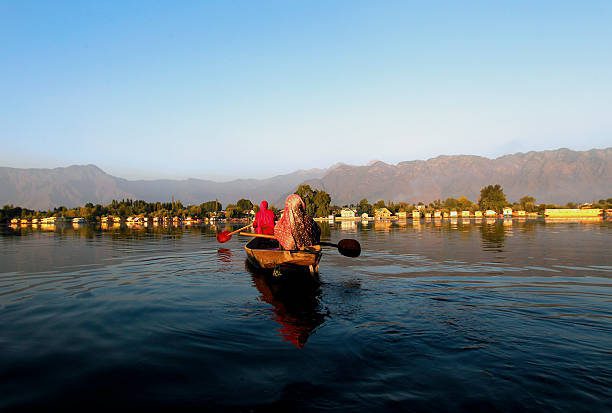

Gulmarg’s Snowy Wonderland:
- Visit the snowy landscapes of Gulmarg – a winter wonderland.
- Participate in many winter sports or just admire the magnificent scenery.
Dal Lake’s Tranquil Beauty:
- Relaxing amidst the tranquil splendor of Dal Lake, enjoy a peaceful ride in Shikaras.
- Appreciate the floating gardens and the colorful markets on the lake.
Pahalgam’s Lush Valleys:
- Visit Pahalgam to see the beautiful valleys and meadows.
- You can take a walk through the natural surroundings or indulge in the majesty of pony rides.
Shalimar Bagh’s Mughal Gardens:
- Step into the Mughal era with a visit to Shalimar Bagh’s exquisite gardens.
- Marvel at the well-manicured lawns, vibrant flowers, and historic architecture.
Experience Beyond the Amarnath Temple:
Local Culture and Traditions:
- Immerse yourself in the vibrant local culture and traditions.
- Witness colorful festivals, traditional music, and dance performances.
Savor Authentic Cuisine:
- Indulge your taste buds in the local flavors of Jammu & Kashmir.
- Sample traditional dishes like Rogan Josh and Wazwan for culinary delight.
Explore the Vibrant Markets:
- Wander through bustling markets filled with handcrafted goods.
- Purchase souvenirs, local handicrafts, and traditional attire.
Connect with Locals:
- Engage in conversations with friendly locals.
- Learn about their way of life, folklore, and stories that enrich your journey.
Essential Tips for Travelers:
Permits and Documentation:
- Ensure you have the necessary permits for the Amarnath Yatra pilgrimage.
- Carry valid identification and other required documents.
Visa and Permits For Foreign Travelers:
- Obtain the necessary visa and permits for traveling to Jammu & Kashmir, India.
- Ensure all travel documents are up-to-date and accessible.
Health Precautions:
- Consult a healthcare professional for travel vaccinations.
- Carry essential medications and a basic first aid kit.
Currency Exchange:
- Exchange currency to Indian Rupees for local transactions.
- Inform your bank about your travel to avoid any issues with international cards.
Additional Considerations for the Journey:
Altitude Awareness:
- Be mindful of the higher altitudes in the region.
- Acclimate gradually to minimize the risk of altitude-related discomfort.
Pack Essentials:
- Pack essentials like warm clothing, sturdy footwear, and a first aid kit.
- Include items such as sunscreen, sunglasses, and a hat for sun protection.
Travel Insurance:
- Consider obtaining travel insurance for added security.
- Ensure the policy covers any unforeseen circumstances during your journey.
Respect Local Guidelines:
- Follow local guidelines and regulations, especially within the temple premises.
- Respect the sanctity of the pilgrimage site and adhere to any specific rules.
Conclusion:
As you conclude your pilgrimage to the Amarnath Cave Temple, reflect on the profound spiritual journey and the captivating experiences that unfolded. The serene landscapes, cultural richness, and the divine aura of the temple create memories that linger in your heart.
Whether you embark on this Amarnath temple Kashmir journey alone, with family, or as part of a diverse group, the Amarnath region leaves an indelible mark on every traveler. The picturesque surroundings, coupled with the spiritual significance, offer a unique blend of tranquility and exploration.
Remember the moments of awe at the Amarnath temple in Kashmir, the warmth of interactions with locals, and the beauty of the natural surroundings. As you bid farewell to this sacred destination, carry with you the essence of Amarnath—a place where spirituality intertwines with the marvels of nature, creating an unforgettable pilgrimage for all who seek solace and connection.
Want to explore Jammu & Kasmir? Read the Xplro Guide Here.
FAQs:
1. What is the Amarnath Yatra?
The Amarnath Yatra is a Hindu pilgrimage dedicated to Lord Shiva, enshrined as a naturally formed ice lingam within the Amarnath Cave in Jammu and Kashmir, India. It’s a revered pilgrimage attracting thousands of devotees every year.
2. When does the Amarnath Yatra take place?
The Amarnath Yatra typically occurs during the summer months, coinciding with the Hindu calendar month of Shraavana (usually between July and August). The exact dates are determined based on the lunar calendar and announced annually.
3. What is the significance of the Amarnath Cave?
The Amarnath Cave holds immense religious significance for Hindus. According to mythology, Lord Shiva narrated the secrets of immortality and creation to Goddess Parvati here. The naturally formed ice lingam within the cave is revered as a manifestation of Lord Shiva himself.
4. What are the different routes for the Amarnath Yatra?
There are two main routes for the Amarnath Yatra:
- Chandanwari route: This is the shorter and more popular route, starting from Chandanwari and passing through Pahalgam and Nunwan.
- Sheshnag route: This route is considered more challenging but offers scenic beauty. It starts from Sheshnag and goes through Kullan and Mahagunas.
5. What is the difficulty level of the Amarnath Yatra?
The Amarnath Yatra involves trekking at high altitudes (around 3888 meters) and can be physically demanding. While the routes are well-maintained, a moderate level of fitness is recommended for undertaking the pilgrimage.
6. What are the registration requirements for the Amarnath Yatra?
Registration for the Amarnath Yatra is mandatory and can be done online through the official website of the Shri Amarnathji Shrine Board (SASB). Specific medical certificates and valid ID proofs are required during registration.
7. What essential items should I carry for the Amarnath Yatra?
Essential items for the Amarnath Yatra include:
- Sturdy walking shoes with good grip
- Warm clothing (including thermals)
- Rain gear
- Sunscreen and sunglasses
- A backpack with essentials like water bottle, medicines, and toiletries
- A valid ID proof and registration slip
8. What are the weather conditions like during the Amarnath Yatra?
The weather in Jammu and Kashmir during the Yatra period can vary. It’s generally cool and pleasant, but sudden rain or snowfall is possible. Be prepared for changing weather conditions.
9. Are there any age restrictions for undertaking the Amarnath Yatra?
Yes, there are age restrictions for the Amarnath Yatra. Children below 13 years and adults above 75 years are not permitted due to safety concerns at high altitudes.
10. What are the medical facilities available during the Amarnath Yatra?
The SASB sets up medical camps along the Yatra route to provide medical assistance to pilgrims. It’s advisable to consult your doctor before undertaking the Yatra and carry any necessary medication.
11. What are the accommodation options available during the Amarnath Yatra?
Various accommodation options are available along the Yatra route, including tents, shared rooms, and guesthouses. Pilgrims can book accommodations in advance or utilize the facilities provided by the SASB.
12. What are the environmental guidelines to be followed during the Amarnath Yatra?
The Amarnath Cave is situated in a fragile ecosystem. Pilgrims are expected to follow strict environmental guidelines like using designated toilets, not littering, and respecting the sanctity of the place.
13. What are the safety precautions to be taken during the Amarnath Yatra?
- Maintain physical fitness and consult your doctor before undertaking the Yatra.
- Stay hydrated and carry adequate water and electrolytes.
- Acclimatize to the high altitude gradually.
- Follow instructions from the authorities and stay on designated routes.
- Be aware of your surroundings and avoid venturing off alone.
14. How can I get more information about the Amarnath Yatra?
For detailed and official information, visit the website of the Shri Amarnathji Shrine Board (SASB): https://www.jksasb.nic.in/
15. What are some additional things to keep in mind while planning the Amarnath Yatra?
- Travel insurance is recommended for unforeseen circumstances.
- Pack light and only carry essential items.
- Be respectful of local customs and traditions.
- Maintain a spiritual and peaceful frame of mind throughout the Yatra.
For more such relatable blogs visit Xplro.com
